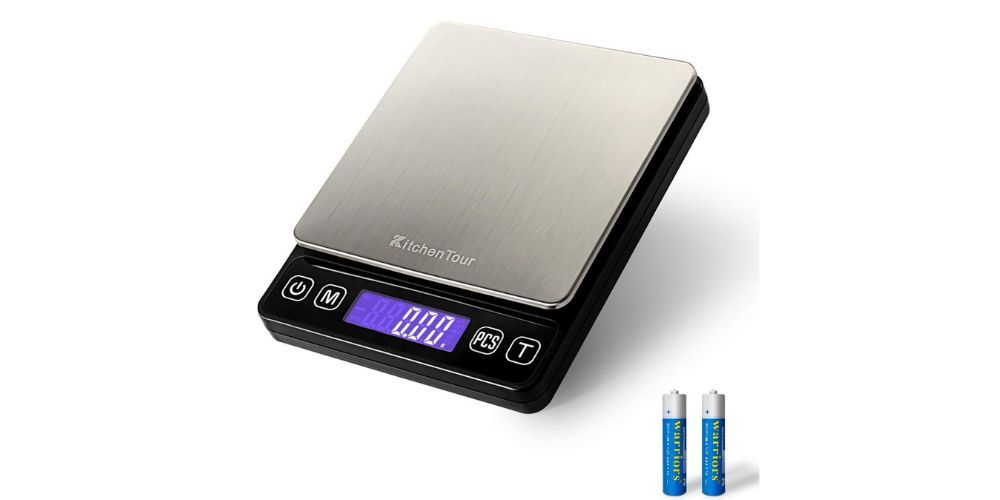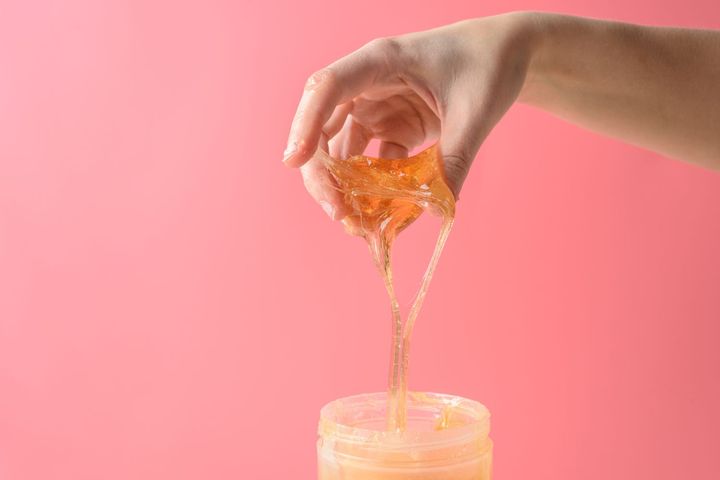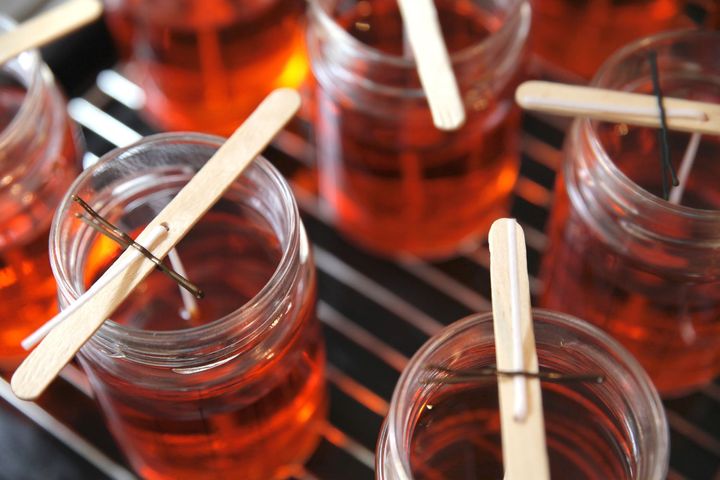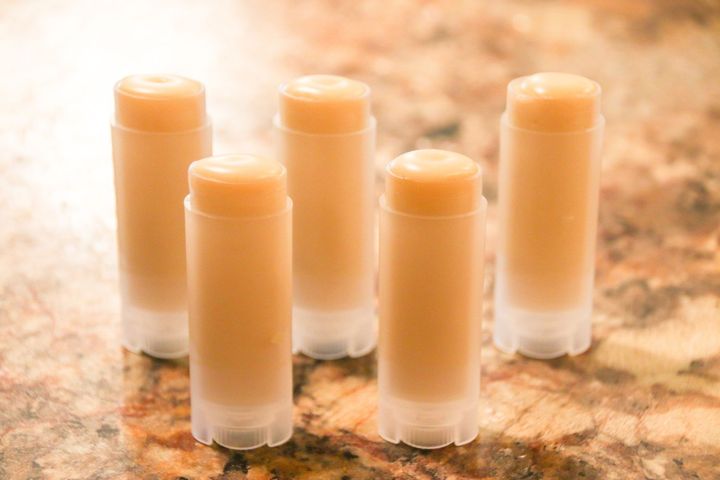How to Make a Soothing and Moisturizing Balm For Your Skin And Hair
Learn how to make an all-purpose soothing balm to treat chapped lips, moisturize skin, tame flyaway hair, and lots more!

Everyone needs a balm in their life.
Balms are these really wonderful natural skincare products with a wide range of applications. They can soothe and moisturize. They can protect and soften.
They are waterless products, which makes them very concentrated and removes the need to think about preservatives.
They are also really simple to make at home for yourself or family and friends.
Let's explore what is a balm and how can you make one yourself.
❔what is a multipurpose balm and is it the same as a body balm or salve?
A multipurpose balm (like the one we will be making today) is a solid concentrated skincare product. It won't be runny but it will be quite soft when you scoop it up out of the jar.
This balm has a really wide range of applications for your beauty needs like:
- cleansing your face and removing makeup,
- use it as a hand moisturizer for dry skin,
- use on lips (as a lip balm),
- use to shape your brows,
- soften any dry/rough areas of skin (like elbows, heels),
- use on your cuticles and nails,
- use to tame any flyaway hair or to nourish dry hair ends,
- it can also be used as a highlighter on your cheekbones,
- or at night on top of your hydrating products to seal in the moisture and form an occlusive layer on the skin.
A body balm, on the other hand, is often referred to a softer, more spreadable product like a body butter. Although our particular formula can be used all over your whole body, it won't be as spreadable as a body butter.
A salve is an ointment used to heal skin and help with a range os skin conditions. A salve is usually made with just oils and waxes (without the addition of plant butters). It is often used in aromatherapy with the addition of various essential oils to the salve. A salve is used to heal the skin. Depending on the ingredients, it can have antibacterial, soothing, repairing or other properties.
The that we are making today is a wonderful concentrated multi-purpose product. Give it a go and this will become a permanent addition to your beauty routine.
🍀ingredients to include in your balm
You have a vast choice of ingredients to include in your balm, depending on your preferences and the purpose of your formulation.
You could use ingredients that are local to you or choose exotic oils and butters.
You could add essential oils to your formulation (but not more than 1% of the total formula, as this is the recommended limit for facial products).
Recommended essential oils would be lavender essential oil, chamomile, or mandarin essential oil. Since this is a facial product I wouldn't include strong essential oils like peppermint or clove.
If you would like to add essential oils, please research the safety of the oils you choose, as some of them have specific dermal limits for topical applications and some could be phototoxic.
You could also use lovely herbal infused oils for this recipe if you have some on hand. For example calendula or chamomile infused jojoba oil will make a lovely soothing balm.
Since this product doesn't contain any water (it's anhydrous) it doesn't require a preservative but it is important to include an antioxidant (vitamin E in our case) to protect the ingredients from oxidation and extend the shelf life of the balm.
For the purpose of this formulation, we will keep it simple and make a great multipurpose product with just 4 easy to source ingredients: shea butter, beeswax, jojoba oil, and vitamin E oil.

🔍equipment needed to make our multipurpose balm
The good news is that you probably have most of the equipment you need in your kitchen already. Even if you don't, most items are inexpensive and easy to find.

We will need a glass beaker or a glass measuring cup to melt the ingredients in.
We will also need a glass rod or just a spoon to mix the ingredients.

To melt our ingredients, we will use a water bath which could be as simple as a pan with simmering water or a simple double boiler (bain-marie) that you can get on Amazon.
To heat our ingredients we can use our stove or a hot plate.
Experienced skincare formulators always use a scale to weigh the ingredients.
This way you can be sure that you are using the same amount of ingredients every time.
For working with small amounts of ingredients a jewelry scale like this one works perfectly well. It is easy to use, surprisingly robust, and inexpensive.

You don't need to buy a scale for this recipe since we will list the ingredients in both grams and tablespoons.
But if you will be making handmade cosmetics on a regular basis, this will be an important piece of equipment to have.

Last, but not least - sanitizing spray!
Before you start on your recipe, make sure you spray all your equipment - beakers, spoons, glass measuring cups, and anything else that will get in contact with the ingredients - with 70% Isopropyl Alcohol and let it air dry.
This will make sanitize your equipment and you will be good to go in no time.
Here is the equipment list again:
- Jewelry scale (optional)
- Glass measuring cups, beakers, or any other suitable glass container you have for melting ingredients.
- A spoon, glass rod, or bamboo stick to mix your ingredients
- A water bath or a double boiler
- A glass jar or metal tin to keep your balm in
- 70% Isopropyl Alcohol spray to sanitize your tools and equipment
🧮️the best way to write a cosmetic formula
Before we dive in, it is important to mention that cosmetic formulas use percentages and grams as units of measurement.
First, you write your formula in percent and then convert the percent into grams (depending on how much of the product you would like to make - batch size).
That's why it is important to have accurate scales because you will be weighing your ingredients rather than using cups, teaspoons, tablespoons, or other kitchen measurements.
Another advantage of a formula that is written in percent is that you can always recreate your product exactly whether you want to make 50 grams or 500 grams.
Just multiply your batch size by the individual percentages of your ingredients and you are good to go.
Also, if you want to improve your formula, it will be much easier to do if you work in percent. It is as easy as increasing one ingredient by a couple of percents and decreasing another one by the same amount. It always has to add up to 100%!
Don't worry about this if you are not quite there yet but do keep it in mind for the future if you will be making cosmetics on a regular basis.
📑shea butter, jojoba oil and beeswax balm recipe
- Shea butter will make 30% of our recipe. To make 100g of balm we will 30g shea butter (about 2 well packed tablespoons)
- Beeswax pellets or grated beeswax ( if your beeswax comes in a beeswax block). Beeswax will make 15% of our recipe. We will need 15 g beeswax for 100g balm (about 2 tablespoons)
- Jojoba oil will make 54% of our recipe. That is 54g for a 100g of final product (about 5 tablespoons)
- Vitamin E oil. We need 1 gram of vitamin E which will make 1% of our total formula (about 5 drops)

🎓method: how do you make an all-purpose balm
1. Spray all the equipment you will be using with 70% Isopropyl Alcohol and let air dry.

2. Prepare your water bath - measure about 3 cm (1') of water in a pan and heat the water on low heat until it very gently simmers.
3. Weigh all the ingredients (except vitamin E and essential oils, if using) and place them in the measuring cup or your glass container to be melted.

4. Place the glass container in the water bath and let the ingredients melt slowly, keeping the heat low and stirring from time to time.

5. When everything is properly melted, take the glass container out of the water bath, add the vitamin E (and essential oils, if using) and stir thoroughly.

6. Pour the balm into the final container and flash cool by putting it in the freezer for 30 minutes or so (no cap on).
7. Take your balm out of the freezer, bring it to room temperature, cap, and label.

😶 why does a balm turn grainy?
If you've ever been in a situation where your creamy and smooth balm turned rough and grainy in a couple of days, you will know how annoying this is.
While it doesn't take away from the product's performance the grains don't look or feel great.
So why does a balm become grainy?
Plant butters are made of different saturated and unsaturated fatty acids.
When the plant butter is melted and cooled slowly at room temperature, the fatty acids can solidify at different rates, clump up together and form those grains.
how to avoid grains in a balm?
- First of all, the ingredients have to be melted slowly and thoroughly.
- After all the ingredients are melted and mixed really well, the balm has to be flash cooled by hot pouring and putting the jar into the freezer.
This way, all the fatty acids are cooled quickly and they will solidify at the same rate which will result in a smooth and creamy balm.
⏱shelf life and storage
Since a balm is a product that doesn't contain any water, it will not grow bacteria and mould. This means that it doesn't require a preservative.
But the oils can eventually oxidize and go bad and that's why it is a good idea to add an antioxidant (vitamin E) to avoid rancidity.
The shelf life of this balm is at least 6 months and most likely close to 1 year, as long as the ingredients you used are within their expiry dates and you added an antioxidant.
Having said that, be very careful not to introduce water in the balm while using it, as this could result in bacterial growth (bacteria love water!).
🌵substitutions
You can easily substitute any of the ingredients in the formula above.
Keep in mind that unrefined ingredients while keeping the amazing properties of the plant they were derived from, often have specific smells that might not agree with everyone.
Jojoba oil can be substituted with any oil of your choice, like olive oil, sweet almond oil, rice bran oil, squalane oil or even coconut oil or anything else you have at hand.
One thing to remember is that some oils like rosehip oil, raspberry seed oil, hemp seed oil, and many others are heat sensitive. If you want to use a heat-sensitive oil in your formula, melt your solid ingredients (butter, wax) first, let it cool a little while stirring, and add the oil to the melted ingredients.
Beeswax can be substituted with other waxes. For a vegan product, you can use a vegan wax like candelilla wax, rice bran wax, or berry wax.
However, you will have to play around with the consistency of your balm. For candelilla wax use about half the amount of the beeswax as it is much harder.
Vitamin E in this formula plays two roles - it is good for your skin as it is an antioxidant, but also its antioxidant properties protect the formula from going rancid and extend the shelf life of the balm. I wouldn't recommend omitting or replacing it with what you have at hand already.
Shea butter can be substituted with mango butter or other soft butters like murumuru or tucuma butter. You could also use harder butters like cocoa butter or kokum butter but the balm will be harder. In this case, you might want to reduce the percentage of butter in the formula.
You can use organic and unrefined, or refined ingredients.
💚troubleshooting
The consistency of a balm depends on a number of things, one of them being the outside temperature.
In hot temperatures, the balm will generally be softer and in colder temperatures, the balm will harden up more.
Depending on where you live you can play around with the consistency of your balm.
If you want your balm to be harder, add more butter and/or more wax and reduce the oils by the same amount.
If you want your balm to be softer, add more oil and reduce either your butters or/and waxes by the same amount.
When making adjustments, keep in mind that your total formula has to be equal to 100%.
Play around until you reach your desired consistency and don't forget to write all your experiments down so that you can replicate and improve your balm every time you make it.
Happy making!
This article contains affiliate links. We may receive a commission (at no cost to you) if you make a purchase through a brand link below. Learn more here.


